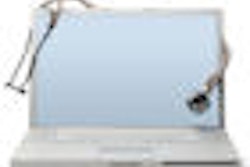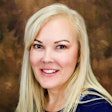
Most California dentists have yet to embrace health information technologies (IT) for clinical applications, opting instead to use office computers, practice management software, and the Internet primarily to manage the business side of their practices, according to a survey released by the California Healthcare Foundation (CHF).
— Paul Glassman, D.D.S., M.B.A.,
University of the Pacific
The survey, conducted by Edge Research between January 14 and April 4, 2010, and released August 26, examined dentists' use of and interest in health IT, including electronic dental health records (EDHRs). It also explored their interest in federal stimulus support for EDHR adoption provided through the American Recovery and Reinvestment Act (ARRA).
Of 19,534 surveys sent out, 714 were completed and returned (3.7% response rate). The California Dental Association collaborated with the CHF on some of the questions.
Among the survey's key findings:
While California dentists understand the importance of health IT to their practice, few consider themselves to be early adopters.
Most California dentists have a practice management system in place and have embraced electronic methods to help with the business side of dentistry: billing, accounting, and scheduling.
The adoption rate for clinical tools has been considerably slower; few California dentists are using electronic means to maintain dental records, and many clinical functions are still done via paper.
Only 23% of California dentists say they have fully implemented an EDHR system in their practice. Another third are either in the process or planning to do so within the next two years.
Purchase and maintenance costs were the biggest concerns among respondents considering implementing an EDHR system in their practice.
California dentists see the benefits of EDHRs in greater business efficiency, accuracy in reporting, and better communication/coordination with other health professionals and patients.
Just one-quarter are inclined to participate in the ARRA program, citing Medi-Cal participation as a disincentive. Those who do profess interest include current Medi-Cal providers and practitioners at community clinics, as well as rural, ethnic, and younger dentists.
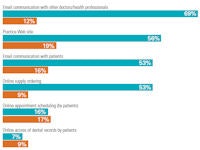 |
| Click here to enlarge this image. |
| Online capabilities of dental practices, California, 2010 |
"It's not surprising that most dentists [in California] are at least thinking about or moving toward some form of electronic record keeping but that only about one-fourth currently have some form of an EDHR," said Paul Glassman, D.D.S., M.B.A., director of community oral health at the University of the Pacific Arthur A. Dugoni School of Dentistry. "This is clearly where the profession is going, where healthcare in general is going, but dentists are not very far along or very interested in interoperable records that can be shared with other people. And I would be very, very surprised if other states had a different situation."
Len Finocchio, senior program officer at the CHF, said he wasn't surprised by the lack of interest in the ARRA incentives because the proportion of dentists that participate in Medicaid programs across the U.S. is well below 50%.
"I did expect that more dentists would be early adopters of health IT," he told DrBicuspid.com. "But they are into technology that supports the business side of their practice more than the oral health side."
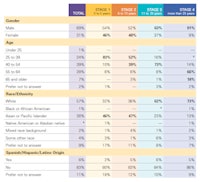 |
| Click here to enlarge this image. |
| Demographics, by stage of practice, California, 2010 |
Finocchio also noted that younger dentists likely comprise most of the early adopters, and that their familiarity with technology will be a key driver in the adoption of EHRs and related digital technologies in dentistry going forward.
"Younger dentists are more tech-savvy and much more used to using technology and having their practice enabled by technology," he said. "Their expectations of what technology can do for them and their patients is much higher."
While most survey respondents regularly use e-mail to communicate with their colleagues and, to a lesser extent, their patients, and more than half have websites, few are inclined to enable their patients to use the Internet for scheduling or accessing their dental records.
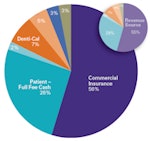 |
| Click here to enlarge this image. |
| Patient volume, by payor, California, 2010 |
"As electronic medical records become more prevalent among patients, I think things like being able to track their test results over time and accessing their records online could prompt them to begin asking dentists for the same sorts of capabilities with regard to their dental records," Finocchio said. "Eventually this will come, but I think it will take a few years."
The survey also revealed changing demographics among California's dentists, with gender and ethnic diversity on the rise among younger dentists.
In addition, the survey found that commercial insurance is the payment source for more than half of dental patients, and another quarter pay the full fee out of their own pockets. Denti-Cal (California's Medicaid dental program) and other public options account for just 10% of California dentists' reported monthly patient volume.
Copyright © 2010 DrBicuspid.com




